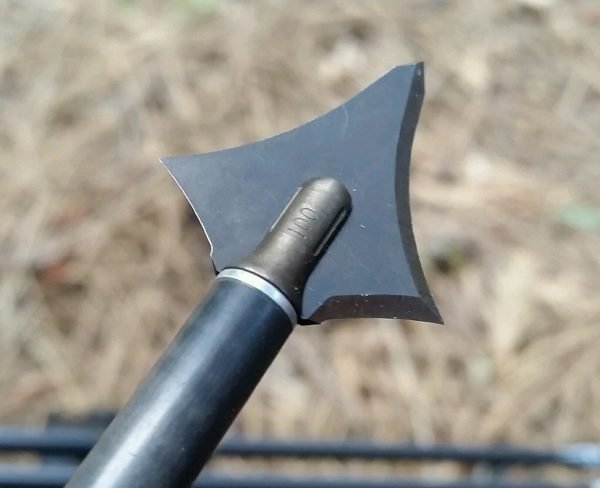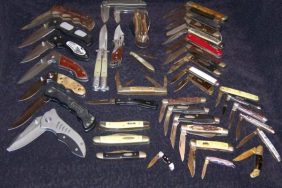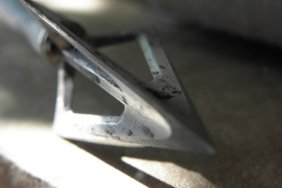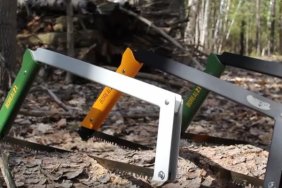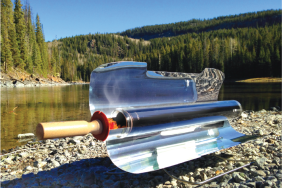KuduPoint Broadheads are unlike many other broadheads on the market. The Corvallis, Oregon based company began in 2012, and they make their broadheads right here in the USA.
I had been hearing of these broadheads for a while, but when I finally got my hands on the KuduPoint Contour in 100 grain weight, then I knew that I had to put them to the test. Here are a few features of the KuduPoint Contour that helped me form an opinion on the broadhead.
The fixed two-blade design of broadheads has been becoming increasingly popular, as it has been for many years. There is a reason man has been using it as long as the bow and arrow have been in use – two-blade broadheads provide deeper penetration than any other design. They are low drag when cutting flesh as well as when in flight. There is also a lot less surface area to get stopped on or slowed down by bones or hard tissue.
The only criticism that I can offer to a two-blade design is the inability to cause anymore than a single directional cut. KuduPoint has an answer to this problem. They utilize the aid of a single-beveled edge. This means that the edges of each blade are only sharpened on one side. The single-beveled edge makes for a significantly longer-lasting edge, as well as an abrupt rotation of the blade. This spinning movement makes for maximum damage to the animal, and causes a spiral pattern cut.
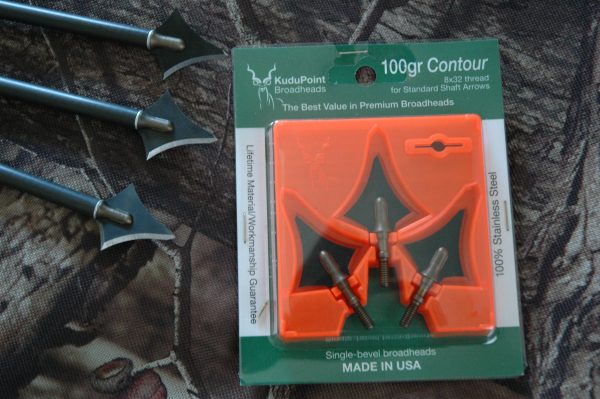
I had heard much about the effectiveness of KuduPoint’s single-bevel, but I had to put it to the test for myself. After putting many arrows down range, I realized the magnitude of this unique twisting pattern. The broadhead twists extremely quickly as it travel into a dense object. And the denser the target, the more rotations will occur.
This rotational movement causes an extremely more devastating wound channel than a broadhead with a traditional double-edged design. The rotational wound channel is basically acting as a broadhead with multi-directional blades, as it does not just form a single cut that follows a single channel.
After speaking with Andy Evans, of KuduPoint, I was able to get some insight on how their broadheads came to be, along with his insights on the mechanisms of the KuduPoint broadheads.
“We certainly didn’t invent the single bevel concept,” Evans told me. “We have examples of chipped Native American stone points that exhibit the concept, whether or not their makers were intentionally pursuing the effect. We did recognize how well they fly and perform.”
“I think the market for single bevel is growing because archers are willing to go with what works, and the evidence is mounting,” he continued. “With any design, and among different flavors of designs, there are trade-offs. What is probably the main reason for KuduPoint’s success is the lack of down-side trade-offs.”
The KuduPoint Contour flew extremely true. I could not tell a difference between shooting the KuduPoint and shooting my field-points. They also seem to be very quiet, when in flight. The broadhead’s construction was also quite impressive – it is extremely solid and robust. The broadhead is all one piece. It is a thick and solid piece of 100% stainless steel. There is a reason that KuduPoint has a lifetime materials and workmanship guarantee for these broadheads.
“They fly quiet and true, and penetrate better than any I have used,” Evans said. “They are very effective killers. And lastly, they are very durable. They will bend if you shoot them at a big rock, but it is amazing how much abuse they can withstand and still be straight and sharp. The previous heads I have used required rework or replacement, seemingly no matter what the blade hit.”
The KuduPoint Contour has an extremely unique design. Both sides have a sweeping edge, which allows the broadhead to go from thin to wide in a short amount of length. It also allows the blades to be sharpened with a single sweep of a small cylindrical diamond hone, as suggested by the KuduPoint company.
A cool feature of the thickness of the metal, and the single-bevel, is that they stay very sharp for a very long time. I shot a single broadhead into a target multiple times and it did not appear to get dull at all. An additional feature of the broadhead is its sharpened rear. This helps for a quieter flight, as well as cutting back out of a wound, in the rare case that you do not get a pass through. I only say ‘rare’ case because a KuduPoint is essentially constructed to facilitate a pass through shot.
The KuduPoint Contour broadheads blew me away. And I cannot wait to actually get a hit in on an animal with them. They are a unique design that is reminiscent of the arrowheads of our past. They penetrate deep, fly true, hold an edge, and create a devastating wound channel. What more can you ask for? These things had me changing from a four-blade broadhead to a solid fixed two-blade – a design I had always thought to be old and outdated. I suggest you try putting a few KuduPoints down range to see the effectiveness for yourself.
